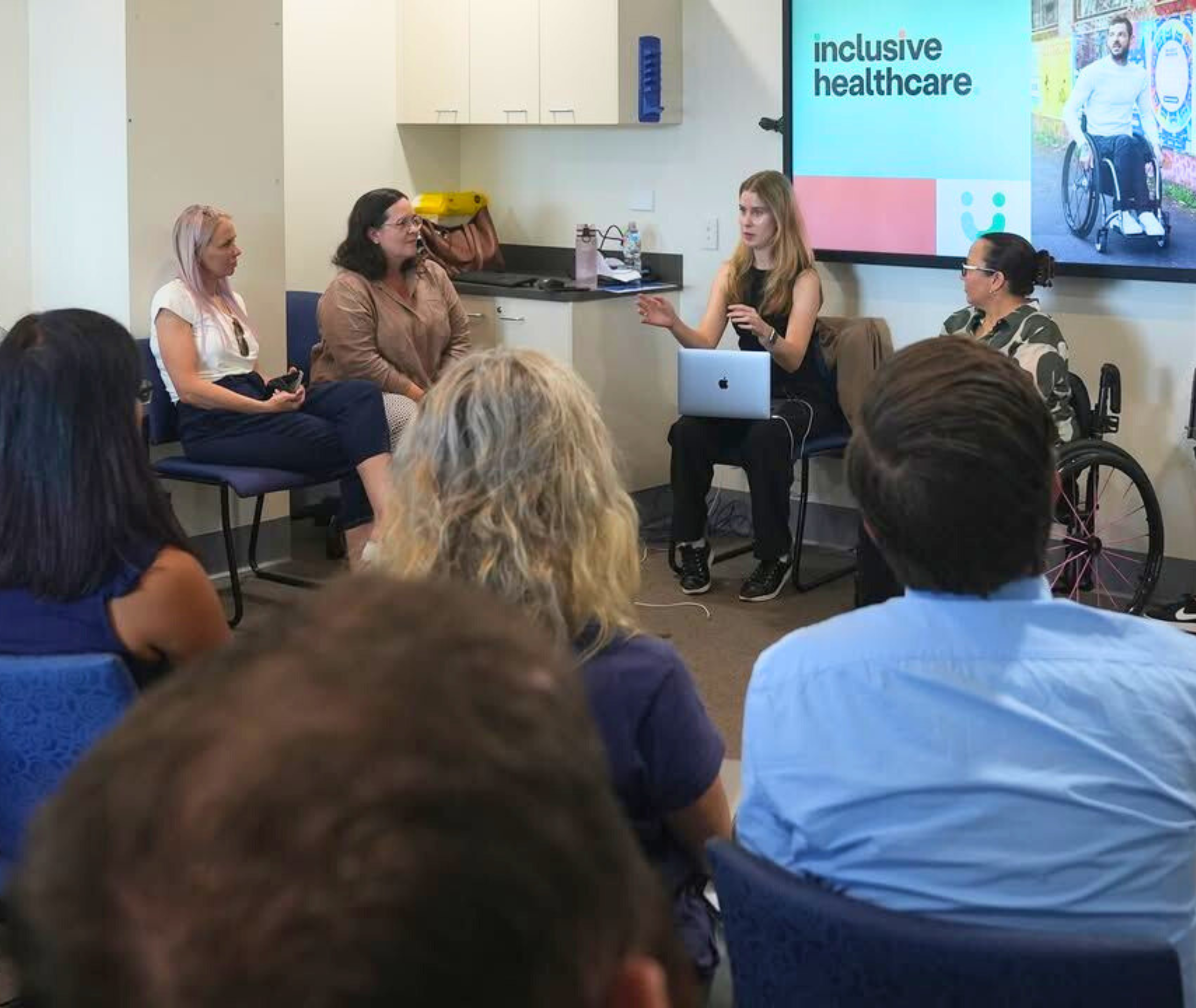Inclusion is not a policy. It’s a practice.
Turning strategy into meaningful change through design, leadership, and lived experience.

Across boardrooms, building sites, and policy launches, the conversation around disability inclusion in Australia is evolving – and fast.
In the past year, we’ve seen a wave of developments that signal a shift in intent, a new government disability inclusion strategy, a landmark global workplace survey, and a renewed call to embed inclusion in the built environment, not as an add-on, but as a foundation.
At Get Skilled Access (GSA), we view this moment as both a milestone and an opportunity – a chance to transition from good intentions to meaningful action.
A national strategy that sets the tone
The launch of Australia’s International Disability Equity and Rights Strategy in late 2024 marked a major step forward. It’s the first time in almost a decade that disability equity has been explicitly embedded into the country’s global engagement, and the first time performance targets have been introduced for disability inclusion in our international development program.
This isn’t just a policy, it’s a disability inclusion strategy that recognises the need to partner with people with lived experience and shift systems, not just attitudes.
It’s a powerful signal. But signals don’t shift culture on their own. That happens closer to home, in our organisations, our workplaces, and our everyday decisions.
From strategy to workplace reality
Deloitte’s Disability Inclusion @ Work 2024 report offers a valuable snapshot of where we are. Based on insights from 10,000 workers across 20 countries (including 500 in Australia), it reveals a gap that can’t be ignored:
- Nearly three-quarters of Australian respondents who requested workplace adjustments had at least one request rejected.
- Many feared being seen as “difficult” for asking.
- Almost half experienced bullying, microaggressions or harassment, yet only some felt safe enough to report it.
These findings highlight why having a disability inclusion strategy on paper is only the beginning. The real opportunity lies in how organisations implement inclusion in practice, from everyday conversations to policy reviews, and leadership culture to the design of physical spaces.
At GSA, we’ve seen how small, thoughtful shifts, led by people with disability, can transform how teams communicate, collaborate, and problem-solve. Inclusion isn’t a box to tick. It’s a way of doing business better.
Designing for equity, not just compliance
This shift is playing out beyond offices, too. In a recent article for ArchitectureAU, Tim Wilson of Folk Architects shared how his daughter’s lived experience with disability reshaped the way he approaches design.
He spoke candidly about the emotional labour of navigating public spaces, the limitations of compliance checklists, and the power of starting with inclusion rather than retrofitting it.
One quote shared at their Melbourne Design Week event captured the philosophy perfectly:
“Diversity is a fact. Equity is a choice. Inclusion is an action. Belonging is an outcome.”
That perspective mirrors much of what we see across industries. Whether you’re designing infrastructure or reviewing your disability inclusion strategy, the principle remains: inclusive environments begin with intentional decisions, not technical fixes.
GSA’s work often starts with questions, not answers. What would this space look like if lived experience were involved from the start? How could this process be reimagined through an accessibility lens? Who’s not in the room, and why?
Inclusion is not about perfection. It’s about participation.
Where we fit in
We’re not policymakers. We don’t write government strategies. What we do is support the people responsible for bringing them to life.
From local councils to major employers, we partner with organisations to turn high-level aspirations into practical, everyday inclusion.
That means:
- Equipping teams with the tools to embed access into their buildings, culture, and systems
- Facilitating workshops grounded in lived experience, not just compliance
- Co-developing disability inclusion strategies that are achievable, not abstract
One example of this in action is our work with Medibank. Together, we co-designed an immersive lived experience session that brought disability inclusion into the heart of leadership conversations, building empathy, shifting mindsets, and informing future strategy.
Testimonial
GSA is a trusted partner of Medibank, flexible, responsive and innovative in their approaches. The team at GSA have enabled Medibank to build a disability confident culture that focuses on creating positive experiences for both our customers and employees with disabilities.
Nigel Davis
Head of Inclusion, Sustainability & Engagement | People + CultureCheckout the Medibank Immersive Experience Video
An invitation to lead differently
What these recent developments show, whether in national policy, organisational culture, or inclusive design, is that Australia is ready for a different kind of leadership.
One that doesn’t rely solely on top-down mandates, but on real relationships. One that’s less about knowing the answers, and more about asking the right questions.
As a country, we’re learning that disability inclusion strategy isn’t just about frameworks, it’s about action. It’s about embedding accessibility and equity into the way we work, design, hire, build, and connect.
And for those ready to move from policy to practice, we’re here to work alongside you. Let’s build something better – together.
